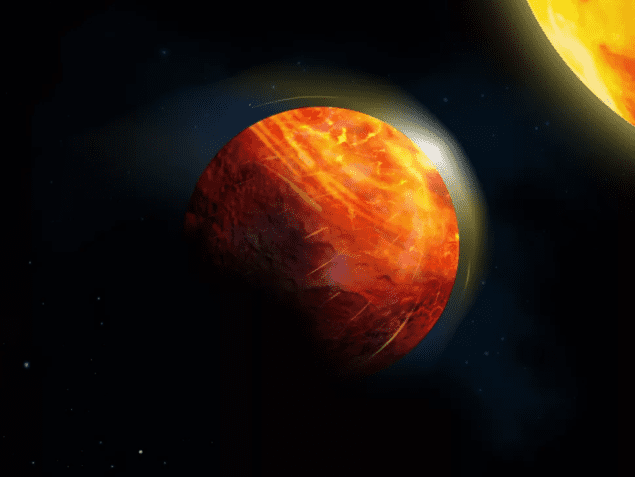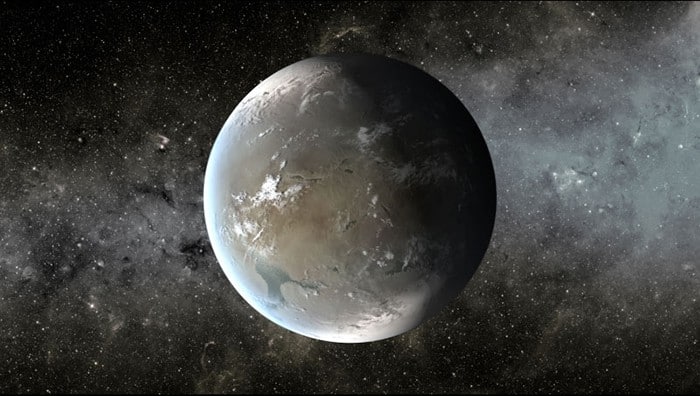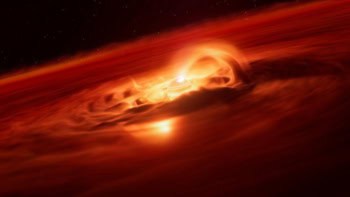
A fiery exoplanet located barely a million kilometres from its parent star is covered by magma oceans and has an atmosphere of vapourized rock on its “day” side, whilst its “night” side remains cold enough for glaciers to form. This is the finding of scientists at McGill University and York University in Canada who, with colleagues at the Indian Institute of Science Education, performed computer simulations using data from NASA’s Kepler Space Telescope and Spitzer Space Telescope to investigate the atmospheric dynamics of the exoplanet K2-141b. The scientists say that the complex interactions they uncovered reveal new information about the early years of other rocky planets – including Earth, which likely passed through a similar molten phase as it formed.
At just 0.00716 AU (astronomical units, the distance from the Earth to the Sun), the orbit of K2-141b is so small that the exoplanet’s parent orange dwarf star blots out a 50-degree chunk of its sky, compared to 0.5 degrees for the Sun as viewed from Earth. This close proximity means that the exoplanet most likely has a tidally locked orbit such that its host star never moves in its sky. It therefore has a permanent day side where temperatures soar to 3000 °C, and a night side where they plunge below –200 °C.
A magma ocean and rocky rain
In a study published in the Monthly Notices of the Royal Astronomical Society, researchers led by Nicolas Cowan and Giang Nyugen show that K2-141b’s extreme temperature difference causes large pressure gradients. Consequently, supersonic winds sweep across its surface, transferring material from one side of the exoplanet to the other. This transfer process exists alongside evaporation and sublimation, which – much like the water cycle on Earth – help to circulate material through the lava planet’s atmosphere.
When heat on K2–141b’s day side evaporates the molten rock at its surface, the resulting cloud of mineral vapour is blown to the night side at a rate of 5000 km/hr. There, it falls onto the exoplanet’s magma ocean and beyond the shore as rain or snow. From there, the material will eventually arrive back at the day side via ocean circulation, but the researchers predict, based on their simulations, that the return flow will be very slow. They also predict that conditions on K2-141b, as on other terrestrial planets, will change over time. Further constraining the composition and dynamics of K2–141b’s atmosphere could therefore help determine the evolution of other exoplanets, and suggest ways of observing them, they say.

Exoplanets could avoid ‘tidal locking’ if they have atmospheres
Candidate for further study
Because K2-141b is so close to its host star, the researchers conclude that it would be a perfect candidate for transit spectroscopy. This technique relies on the fact that when an exoplanet passes in front of its parent star, the starlight must travel through the exoplanet’s atmosphere to get to Earth. In the process, molecules in the atmosphere absorb certain light wavelengths whilst letting others pass through unhindered; hence, a careful analysis of the star’s spectrum reveals information about the composition of the exoplanet’s atmosphere. The fraction of stellar light that reaches Earth after such transits is, however, extremely small, which restricts the telescopes and instruments that can be used to observe it. Studies like this one therefore help constrain which systems are best-suited to transit spectroscopy.



